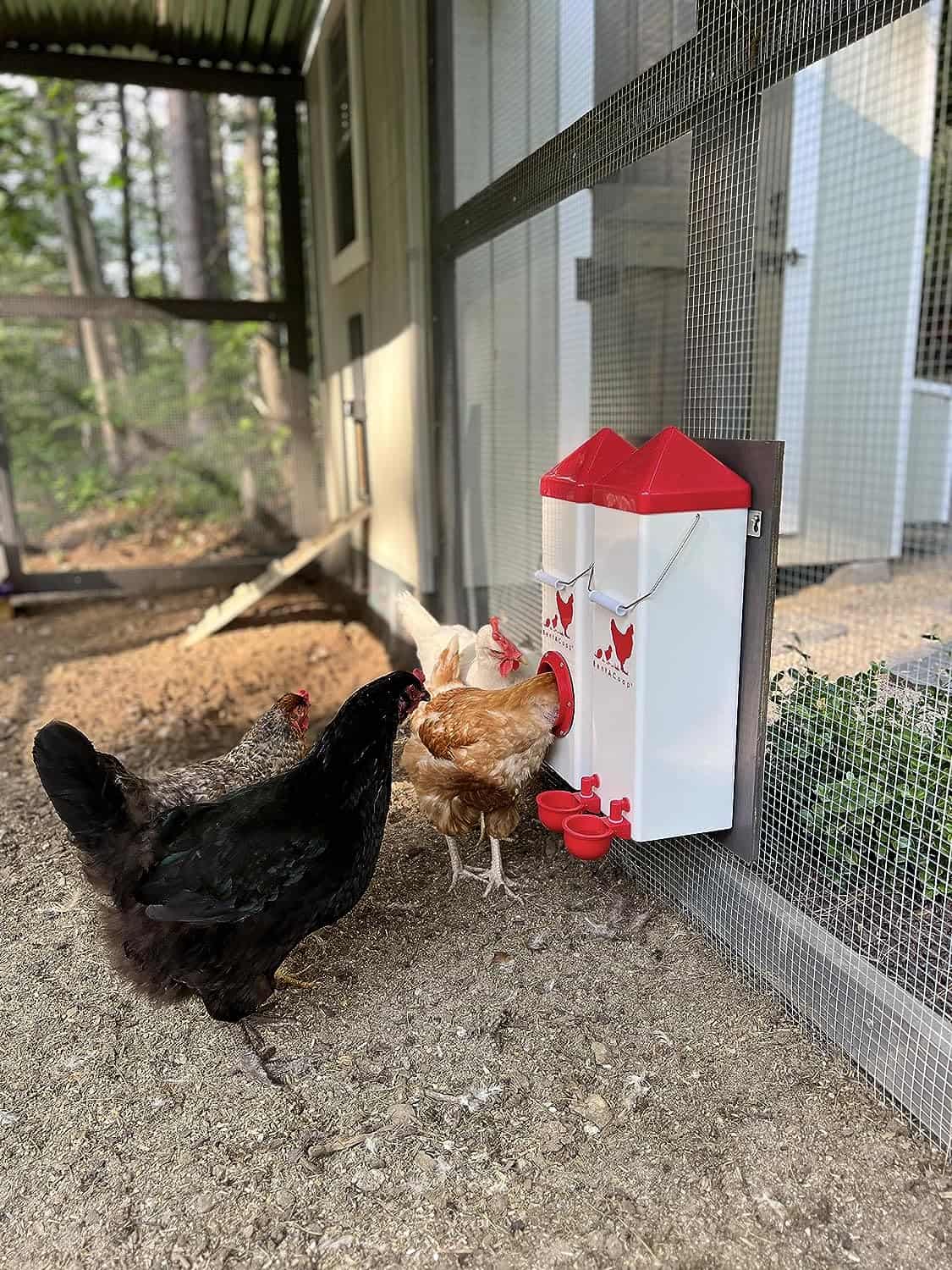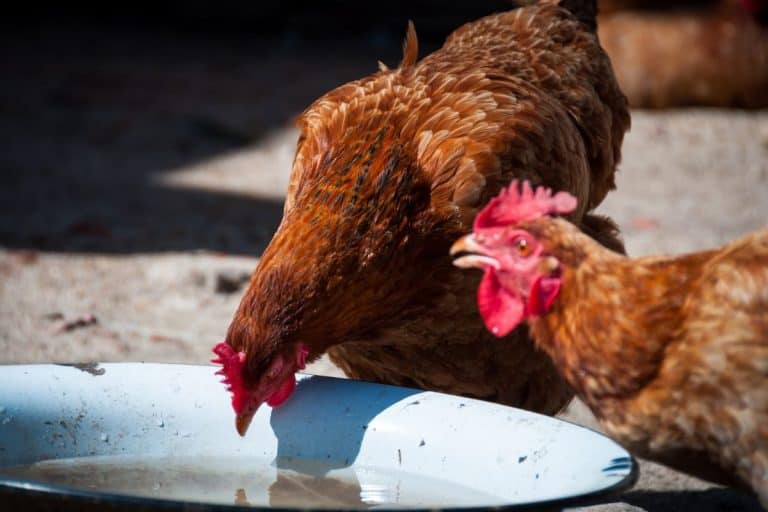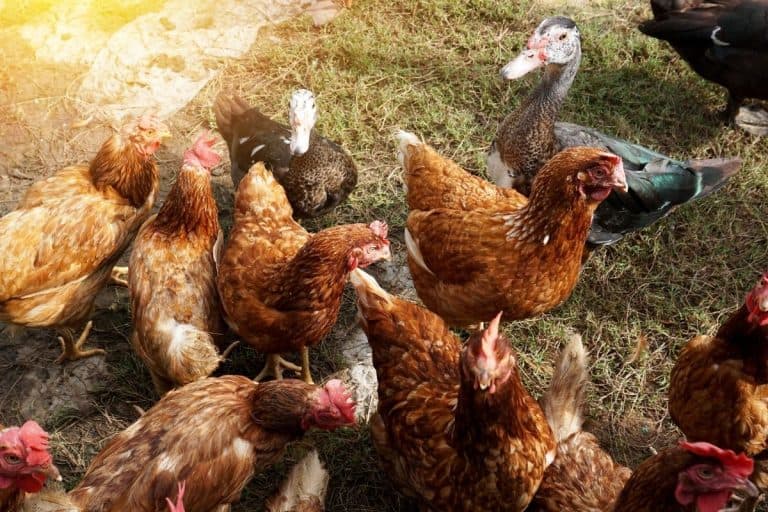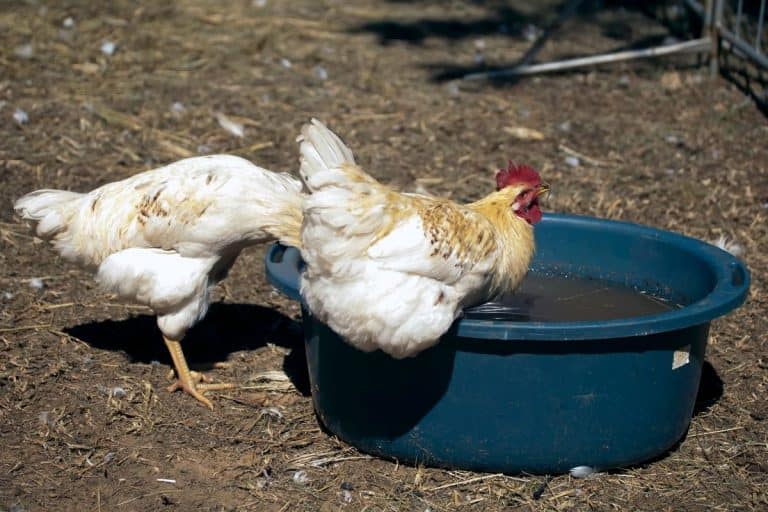The 9 Most Common Diseases in Chickens (Symptoms, treatment)
When caring for and raising chickens, there is always the possibility of illness and disease. Just like people and other animals, diseases pose a large threat to your flock of chickens, and educating yourself on the potential issues that your flock could contract is crucial when raising chickens. Illness can spread quickly among a group so be aware and don’t let yourself be blindsided by sickly chickens.
The most common diseases seen in chickens are the avian flu, cholera, Newcastle disease and fowl pox.
While there are several health complications and diseases that can affect chickens, it is important to be educated on what is what, how to prevent the disease, and how to treat it once a disease or illness is diagnosed. This article goes into detail on what the most common health problems are in chickens and what to do about them.

Hey chicken buddies: Quick heads-up before going further! I've put together a list of stuff I use and love for my flock. If you're curious about what keeps my hens happy, click here to find out.
#1 Avian Flu
Avian Flu or Influenza is also known as bird flu and is quite deadly among flocks, affecting the upper respiratory system of poultry.
This virus stirred up some fear and controversy years ago when people were contracting the disease from infected poultry. Humans really are not at much risk of contracting the avian flu from their infected chickens, but there is unfortunately not much that can be done to prevent or treat it.
Symptoms
Symptoms of the avian flu are typically respiratory in nature such as coughing, sneezing and facial swelling, followed by a lack of egg production and diarrhea. Their comb and wattle will usually be an unhealthy blue color.
Prevention and treatment
Prevention can be difficult if you have a mixture of aquatic birds that intermingle with your chickens. Typically the avian flu is carried by birds who spend more time in water and they carry it to other poultry. Wild birds can also spread this disease, so minimizing interaction with waterfowl is good practice.
Influenza is deadly and treatment is not possible. Keeping your other seemingly healthy chickens away from any that are showing signs of the flu is extremely important in protecting the rest of the flock. Once a bird has contracted the avian flu it is important to euthanize them. It is recommended that you burn or bury the carcass as well to minimize the spreading of the disease.
Wait, I have some recommendations for you!
Before you go any further, I want you to take a look at some of the recommendations I've handpicked for you. I think these are essential items you should have for your chickens flock. You can check them out and buy them directly from Amazon.
 |  |  |  |
| Essential accessory for your coop | No more tripping over hoses! | Predator protection made easy | Comfort + style is possible |
#2 Fowl Pox
Fowlpox is a highly contagious disease that can be spread through fomites (inanimate objects that have been exposed to the disease) or another bird that is a carrier but not yet showing signs.
Symptoms
Symptoms of Fowlpox are characterized by white spots on the skin and purple scabs on the face, comb and wattles. They can also develop white spots on the inside of their mouth and trachea. They will also stop laying eggs.
Related article: Why is my Chicken’s Comb Pale? (Comb colors meaning)
Prevention and treatment
There is a vaccination that can be given to uninfected birds to prevent them from contracting this disease from another chicken. Thankfully, the prognosis is good, and with supportive care and a clean environment, they can survive this illness.
It is easy to pass this disease to other birds, so be sure to isolate suspected sick birds and disinfect the communal areas often.
#3 Newcastle disease
Newcastle disease is another extremely contagious respiratory virus that is normally seen as an acute onset.
Symptoms
Typically this virus manifests in a way that appears respiratory, but it is also found in the digestive tract and nervous system of the chicken. Symptoms usually appear as difficulty breathing and discharge from the nose and eyes. In some cases, the bird’s legs will become paralyzed and their necks twisted.
Prevention and treatment
Prevention can be difficult if it is too early to notice the virus among your flock. This virus is usually carried by wild birds or a fomite. Maintaining cleanliness and preventing interactions with wild birds is a good way to avoid this virus. A vaccine is also available for chickens, turkeys and pigeons.
Treatment with older birds is usually successful with some supportive care and they thankfully do not remain carriers afterward. Younger birds with weaker immune systems tend to not survive.
#4 Fowl Cholera
Fowl Cholera is a disease that is caused by Pasturella multocida bacteria which is typically passed on or contracted from wild animals or food or water that has been contaminated.
Typically, this illness is seen in older roosters and less commonly in hens.
Symptoms
Symptoms of Fowl Cholera typically start with greenish diarrhea, oral or nasal discharge, lameness and lethargy. Their wattles will often turn an unhealthy dark or purple color.
Prevention and treatment
There is a vaccine available for healthy chickens to prevent this disease. Keeping your coop clean and free of rodents and wild birds is a good practice to minimize the occurrence of Fowl Cholera and other diseases.
It is possible for a chicken to survive Cholera but they will remain a carrier of the disease for the remainder of their lives. It is a safer practice to euthanize the affected bird and save the rest of your flock. Disposing of the body properly is also important for minimizing the spread of the disease.
#5 Bumblefoot
Bumblefoot is a relatively common disease that affects chickens when they develop an infected cut or scratch on the feet.
Usually, they injure themselves pecking or scratching at the ground, then the wound becomes angry and infected, causing swelling of the foot.
Symptoms
Swelling at the area of a scratch or cut on the foot or feet.
Prevention and treatment
Preventing bumblefoot can be difficult as it is usually caused by normal chicken behaviors. The only way to potentially minimize this issue is to keep a close eye on the condition of your chicken’s feet, being sure to clean and disinfect any areas that seem unhealthy.
Treatment is normally minimal and cleaning and disinfecting the affected area should help clear up bumblefoot quickly.
#6 Infectious Bronchitis
Infectious bronchitis (IBV) is an upper respiratory condition that is caused by the avian infectious bronchitis virus and is highly contagious among flocks of chickens.
This virus also is unusual in the sense that it only affects chickens and not other poultry or fowl. It is spread by an infected chicken through respiratory fluids and fecal matter that has aerosolized or ingested via contaminated food or water.
Symptoms
Symptoms of infectious bronchitis include common upper respiratory issues like coughing, sneezing and nasal discharge. Sometimes their air sacs will fill with a thick and mucousy exudate, causing difficulty breathing. Egg-laying will also cease to happen. Sometimes the shells of the eggs become soft and wrinkled.
Prevention and treatment
Because there are several different strains of this virus, it is difficult to pinpoint which vaccinations should be used for specific birds. The chosen vaccination should be based on the prevalent strains of IBV in that area.
Treatment is difficult and the mortality rate with this virus is nearly 100%.
#7 Marek’s disease
Marek’s disease is a virus that belongs to the Herpes virus family and can cause tumors and paralysis.
It is another highly contagious disease that affects mainly chickens but also some quail and turkey. This virus commonly affects young chickens and birds under the age of 20 weeks and is easily contracted by them inhaling pieces of shed skin and feathers from an infected bird.
Symptoms
The most obvious and commonly seen symptoms are tumors or lesions that begin growing on the inside and outside of the affected chicken. Sometimes they even become paralyzed or acutely died from the disease.
Prevention and treatment
There is no treatment. So preventing this disease by vaccinating and maintaining a good level of cleanliness is a responsible way to avoid this issue.
Once a chicken has become infected with this disease, separating it from the rest of the flock and euthanizing it would be necessary to prevent spread among the group.
#8 Thrush
Also known as Candidiasis, thrush is a fungal disease of the GI tract that is spread through the ingestion of the fungus Candida albicans.
It is transmitted through unsanitary drinking facilities and molded feed. It is worsened by parasitic infections and malnutrition.
Symptoms
Symptoms of thrush typically include a mushy, white substance in the crop and a crusty vent. Sometimes the signs of this fungal infection are less obvious and only inappetence and lethargy are noted.
Prevention and treatment
To prevent this fungal issue from affecting your flock, it would be pertinent to keep their feed from becoming wet and moldy and dump their drinking water daily in order to keep contaminants and fungus away.
Treatment with an antifungal from your veterinarian is usually effective in treating thrush. Be sure to rule out other potential diseases as thrush can manifest in similar ways to other gastrointestinal issues.
#9 Air Sac Disease
Air sac disease is a disease in chickens that is associated with the lower respiratory tract. Typically this disease causes inflammation in one or more of their nine air sacs, which are small bubble-like pockets that help to circulate oxygen to the rest of the body.
This condition is usually caused by a fungus or bacteria and is rarely viral.
Normally air sac disease is caused by the bacteria Mycoplasma gallisepticum.
Symptoms
Very similar to other respiratory conditions in chickens. Usually, it starts with a decrease in egg production, then coughing, sneezing, nasal and ocular discharge are seen. Sometimes even swollen joints and acute mortality are noted in younger or compromised birds. Ruling out Marek’s disease is important in this diagnosis.
Prevention and treatment
There is a vaccine that can help prevent this disease. If you notice any chickens showing signs of this disease or one like it, separating the affected chickens would be the first step in minimizing spread.
Treatment is not usually too complicated and can be easily fixed with antibiotics from your veterinarian.
Daily inspections of your flock
It is a wise and smart practice to go outside and inspect your chickens daily. If you notice that one of them is acting strangely in any way, then isolating them would be important in keeping the other safe. Even if it turns out that the chicken is healthy and just stressed, preventing the spread of a potentially dangerous and life-threatening disease could save your entire flock.







